The Future Is
Near Infrared
A breakthrough, safe, non-invasive device using fdNIRS to assess vital biomarkers, including tissue oxygen saturation and concentrations of hemoglobin.
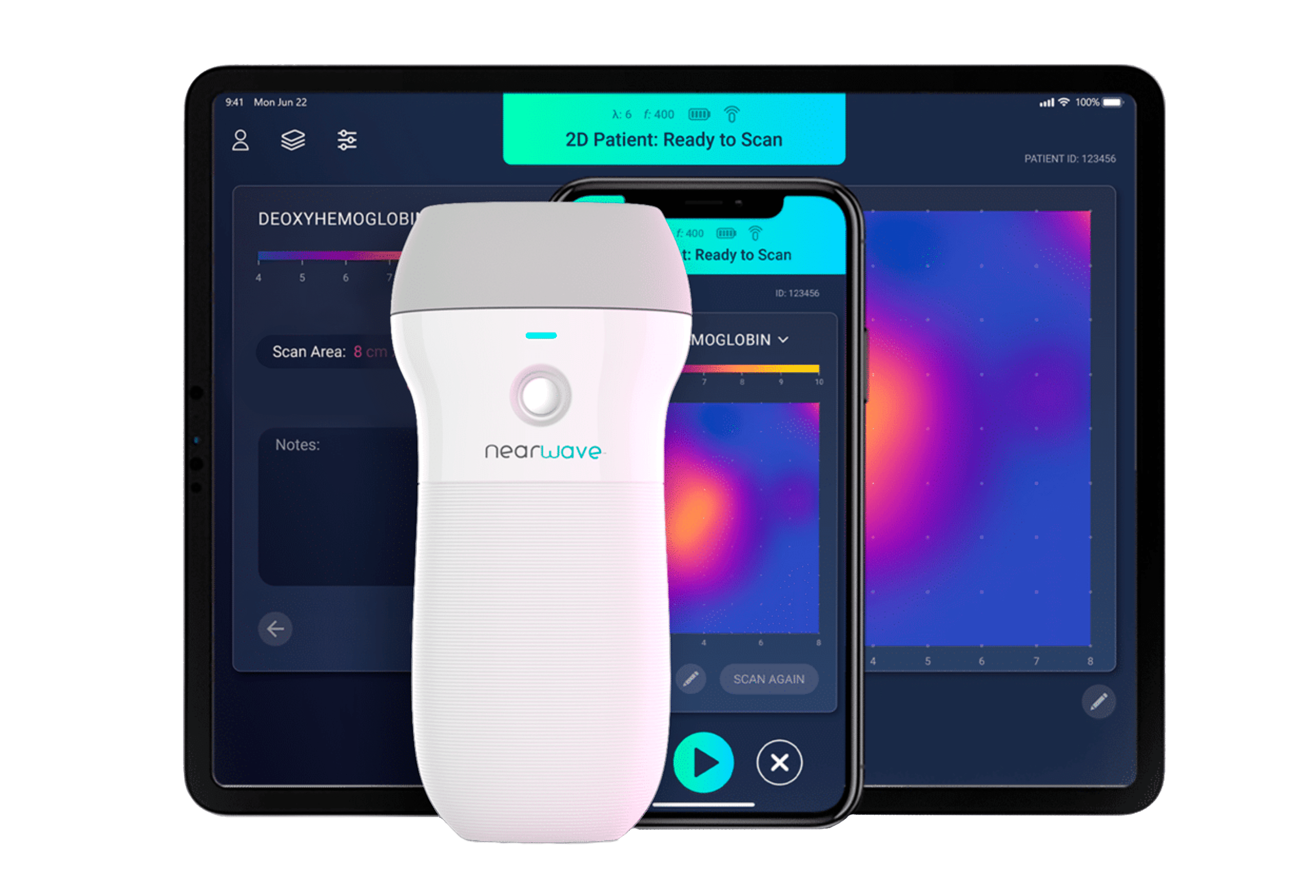
Introducing
The NearWave Scanner
Non-Invasive.
Non-Ionizing.
Deep Tissue.
Quantitative.
Notice: Investigational device. The NearWave Scanner® is currently used for research only.
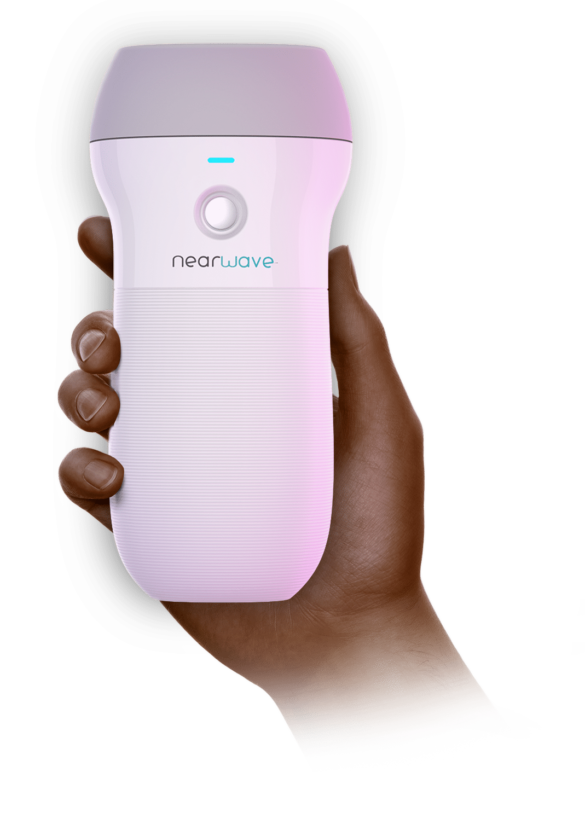
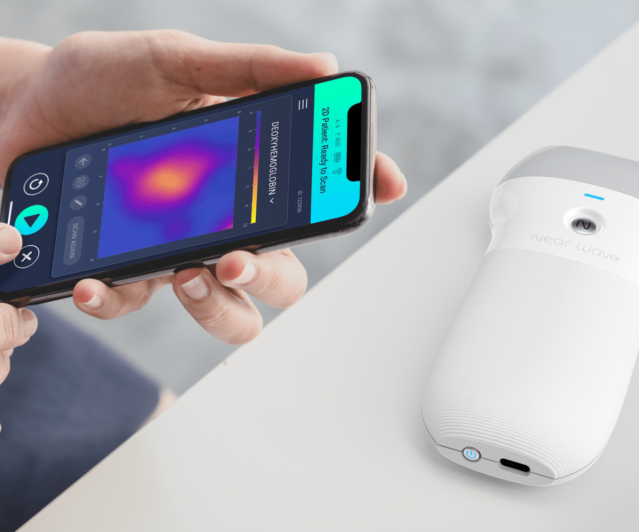
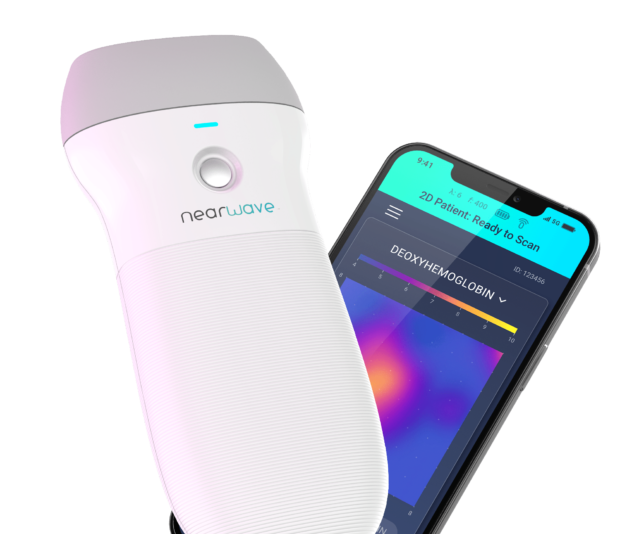
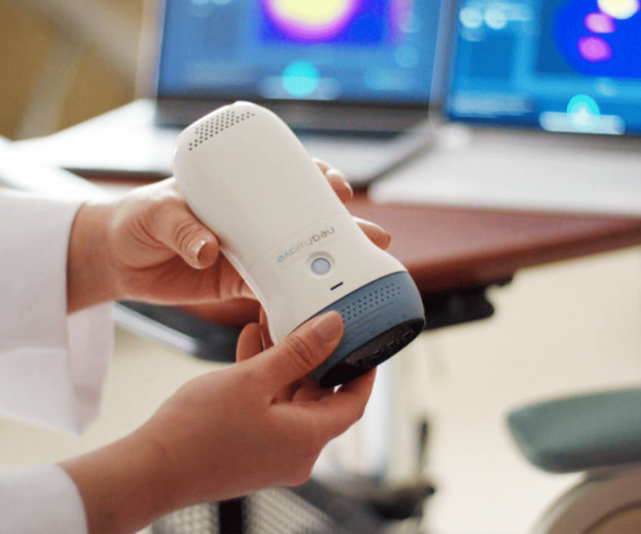
Smallest, fastest, easiest to use frequency domain near infrared spectroscopy (fdNIRS) device in the world
Experience a culmination of 30 years of diffuse optics science in a single device. The NearWave Scanner is the smallest fully integrated, battery powered handheld, fastest (36.6kHz for high speed mapping), and easiest to use fdNIRS based device in the world. From the clinic to the research lab, the iOS companion app allows for real-time visual display of 1D and 2D quantitative mapping data.
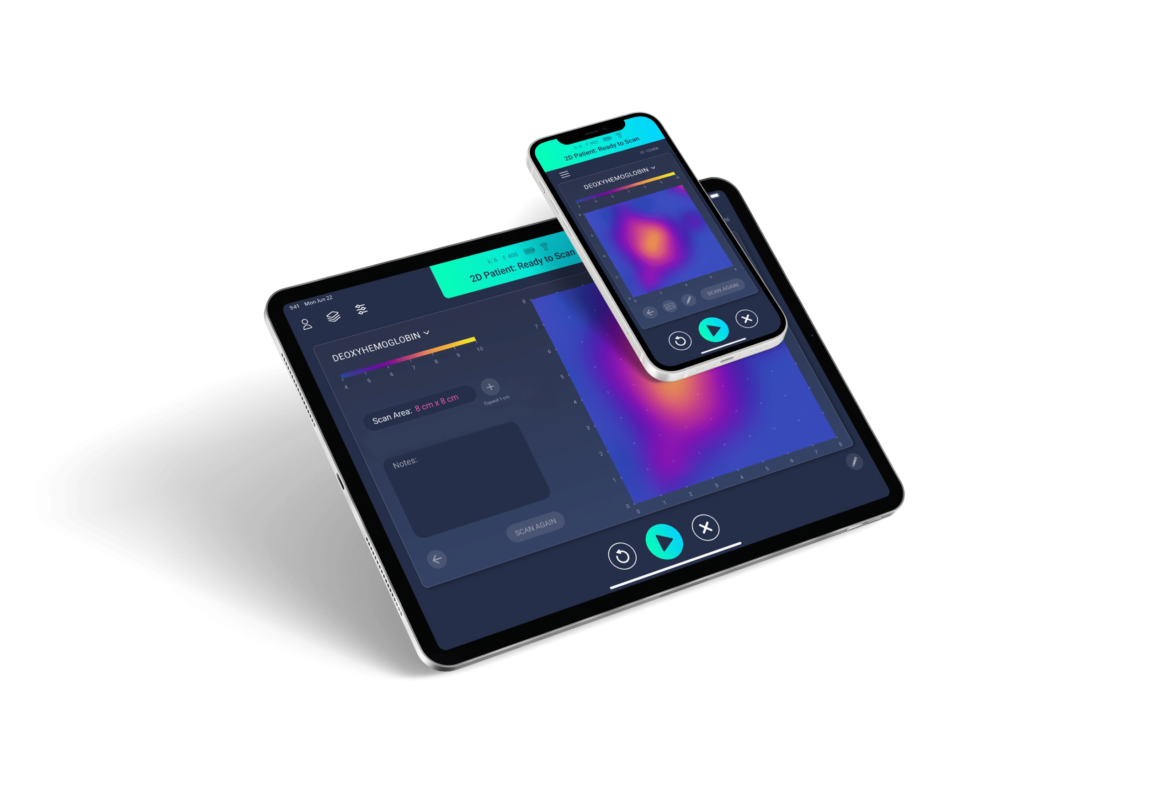
What is Frequency Domain Near Infrared Spectroscopy (fdNIRS)?
In clinical applications, fdNIRS is used to measure optical properties such as absorption and scattering in deep tissue (1-2.5cm). The resulting information can lead to quantitative metabolic measurements of key biomarkers in the tissue such as regional oxygen saturation and hemoglobin concentrations. This provides clinicians with greater insight, facilitating the development of predictive models for clinical diagnostic information.
Applications of fdNIRS
Tissue Oximetry
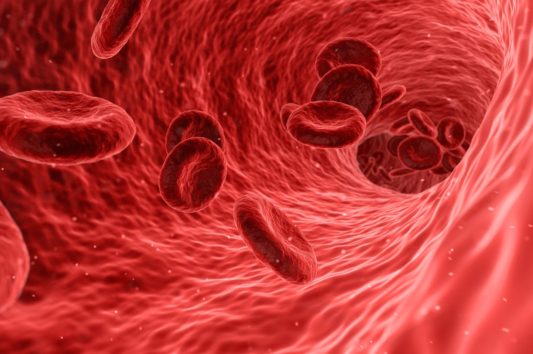
Measure Tissue Oxygenation
Including StO2, HHb (or Hbr), HbO2, and THb
fdNIRS can provide quantitative tissue perfusion information including StO2, HHb (or Hbr), HbO2, and THb. This information can be used in many clinical applications ranging from sports medicine and weight loss to cardiovascular health assessment and treatment.
Notice: The NearWave Scanner is currently intended for investigational use only.
